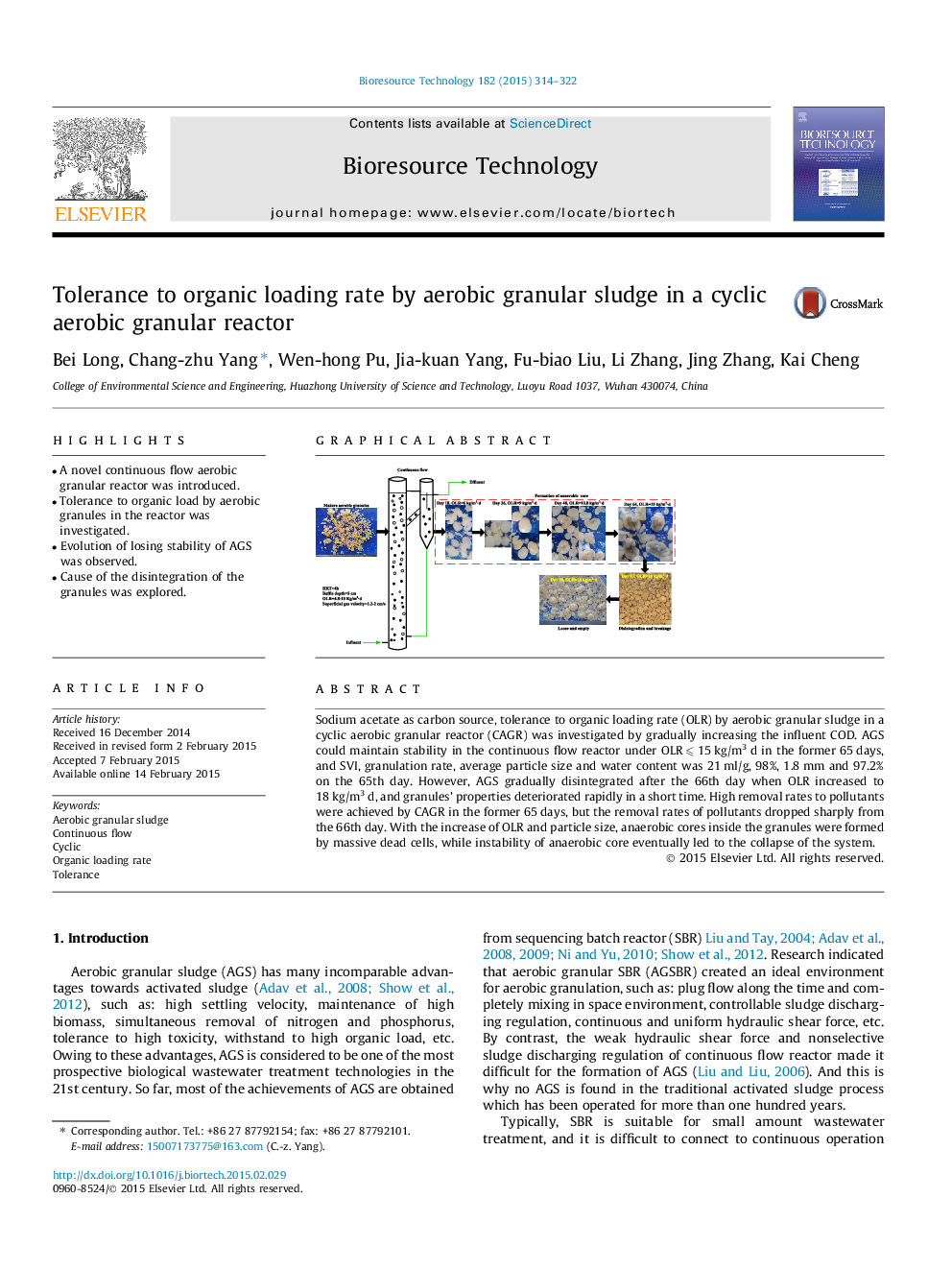| Article ID | Journal | Published Year | Pages | File Type |
|---|---|---|---|---|
| 679968 | Bioresource Technology | 2015 | 9 Pages |
•A novel continuous flow aerobic granular reactor was introduced.•Tolerance to organic load by aerobic granules in the reactor was investigated.•Evolution of losing stability of AGS was observed.•Cause of the disintegration of the granules was explored.
Sodium acetate as carbon source, tolerance to organic loading rate (OLR) by aerobic granular sludge in a cyclic aerobic granular reactor (CAGR) was investigated by gradually increasing the influent COD. AGS could maintain stability in the continuous flow reactor under OLR ⩽ 15 kg/m3 d in the former 65 days, and SVI, granulation rate, average particle size and water content was 21 ml/g, 98%, 1.8 mm and 97.2% on the 65th day. However, AGS gradually disintegrated after the 66th day when OLR increased to 18 kg/m3 d, and granules’ properties deteriorated rapidly in a short time. High removal rates to pollutants were achieved by CAGR in the former 65 days, but the removal rates of pollutants dropped sharply from the 66th day. With the increase of OLR and particle size, anaerobic cores inside the granules were formed by massive dead cells, while instability of anaerobic core eventually led to the collapse of the system.
Graphical abstractFigure optionsDownload full-size imageDownload as PowerPoint slide
